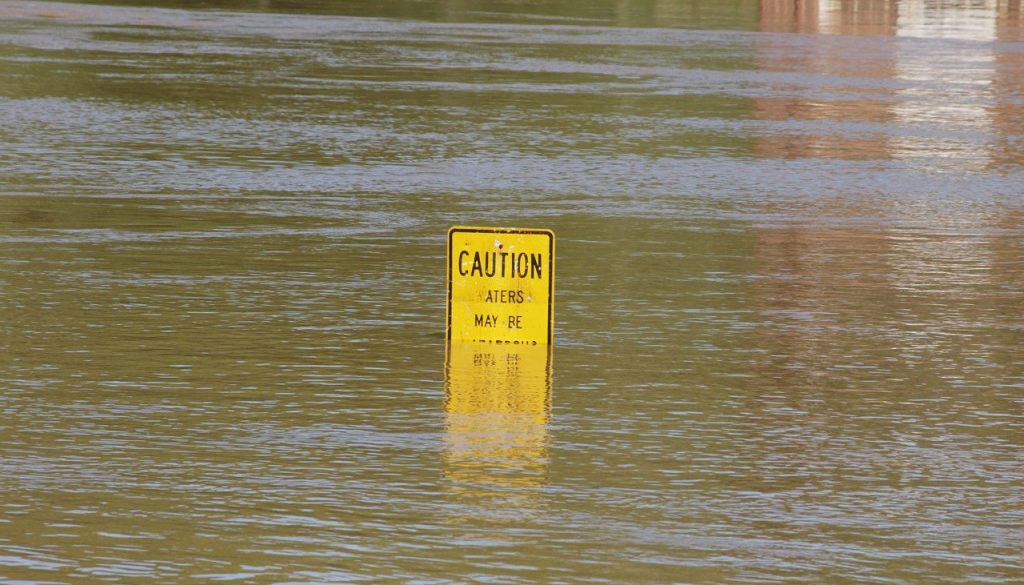Texas Floods Illustrate the Need to Plan for Climate Change
By Rob Moore, Senior Policy Analyst, Natural Resources Defense Council
Over the Memorial Day weekend widespread flooding occurred in at least eight counties in Texas, which include the cities of Austin, Dallas, San Antonio, and Houston. These floods have brought a tragic loss of life and are forcing families from their homes. But these floods also provide an important opportunity to take a closer look at why we need to better prepare for the increased likelihood of flooding that accompanies climate change.
In recent years, Texas has mostly been in the news for drought. But floods still happen and are nothing new to residents of the state. Major flooding occurred in parts of Texas in 2013, at the tail end of the state’s multi-year drought. According to the state’s 2013 Hazard Mitigation Plan [2013_TX state SHMP_final.pdf] Texas averages $254 million in flood damages each year.
Climate projections indicate that Texans will increasingly live at the extremes, enduring long periods of drought and water scarcity, interspersed with episodes of intense storms that cause the kinds of flash flooding Texans have been enduring this week. With the additional risk of hurricanes and sea-level rise, climate change is going to make Texas increasingly vulnerable to natural disasters.
But you might not know it from the way many Texas’ elected officials have spoken about climate change in the past. Both of the state’s U.S. Senators, plus 15 of its 36 Representatives in the House, are on record denying the science of climate change, according to ThinkProgress. Additionally, state planning documents that help Texas prepare for natural disasters don’t adequately acknowledge the impacts of climate change.
Texas’ most recent disaster preparedness plan — also known as a “hazard mitigation plan” — was adopted in 2013 [2013_TX state SHMP_final.pdf]. These plans are reviewed by FEMA, and the agency’s approval is a pre-requisite for receiving federal disaster mitigation assistance. Texas’ current plan doesn’t acknowledge how climate change will affect the frequency and scale of natural disasters, like flooding, nor does it look at how climate change might affect future trends. Since Texas last submitted its hazard mitigation plan for approval two years ago, FEMA has now made it clear that climate impacts must be factored into hazard mitigation plans. So presumably, the next Texas hazard mitigation plan, due in 2018, will do a better job accounting for the risks of climate change.
Between 1989 and 2012 Texas received more than $880 million in FEMA disaster mitigation aid, more than any other state except Louisiana ($1.25 billion) and California ($1.1 billion).
Like many states, Texas relies quite a bit on the federal government to recover from flooding disasters. Texas is home to 597,951 properties that are enrolled in the National Flood Insurance Program, administered by Federal Emergency Management Agency (FEMA). Over the history of federal flood insurance, policy holders in Texas have filed 194,126 claims totalling more than $5.61 billion in flood damages, the third highest amount of damages paid out by the federal government, behind only Louisiana ($16.7 billion) and New Jersey ($5.65 billion).
According to documents requested by NRDC from FEMA, more than $1 billion of those damages (18 percent of total in Texas) were paid to 6,683 “repetitive loss properties”. These are properties that have been flooded repeatedly and had two or more claims paid by the National Flood Insurance Program. One notable property in South Houston has made 27 separate flood damage claims totaling $1.8 million!
The State of Texas should be doing much more to reduce its vulnerability to flooding. But some communities in the state are much more proactive. A recent survey by the Association of State Floodplain Managers found that twenty-nine counties and municipalities have adopted more stringent flood protection standards than required by the National Flood Insurance Program. At a minimum, communities must ensure protection to the elevation of the 100-year flood (a flood that has a 1 percent likelihood of occurring each year). But these communities Texas require new development to be 2 or 3 feet higher than the 100-year flood elevation. That’s good planning and smart thinking. In fact, President Obama and FEMA have been advancing a similar standard that will apply to all federal funding decisions, but members of Congress are intent on blocking these important public safety standards.
It doesn’t have to be this way. Recently, NRDC proposed novel reforms to the NFIP that would make it easier for people to move away from areas at greatest risk of flooding. The reforms we recommend could transform the NFIP from a program that prolongs flood risk in Texas and elsewhere, and is a serious fiscal liability, into one of the best tools the nation has to prepare for the impacts of climate change, while also decreasing our current and future vulnerability to floods.
These recent floods, and the tragic loss of life and property damage that has resulted, should spur Texas’ leaders to act. Natural disasters made worse by climate change are an all-too-real threat that we must prepare for now. Climate change is loading the dice, making floods and droughts more likely in Texas. If elected officials in the Lone Star State don’t start to take this reality more seriously than they have in the past, floods like the ones Texans are currently enduring will only be more devastating.

